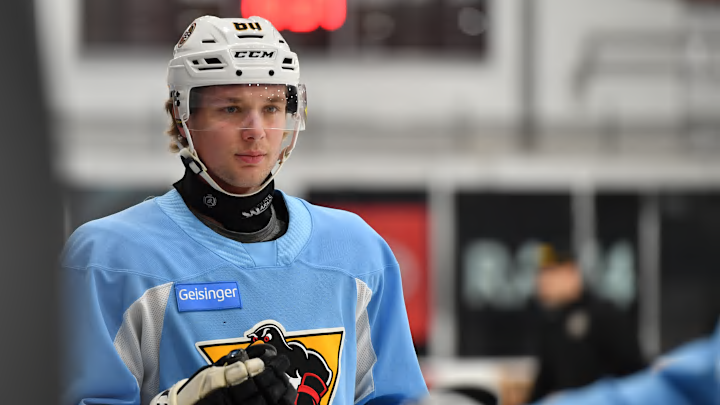Last season, the hockey world was stunned by a tragic incident during an Elite Ice Hockey League game in late October, which sadly claimed the life of former Pittsburgh Penguins forward Adam Johnson.
Following this tragic situation, discussions about player safety intensified across the professional hockey community. This led to suggestions for mandating neck protection, with many NHL players, including those on the Pittsburgh Penguins roster, voluntarily adopting such safety measures.
The American Hockey League’s Board of Governors has unanimously approved the mandatory use of cut-resistant neck protection by all its players and on-ice officials, beginning with the upcoming 2024-25 season.
— American Hockey League (@TheAHL) August 23, 2024
📝: https://t.co/JxiJXb6d0f pic.twitter.com/znwpHA3IjH
In response, the Pittsburgh Penguins implemented a mandate last October requiring the Wilkes-Barre/Scranton Penguins and the Wheeling Nailers to wear neck and wrist guards.
The recent AHL mandate for these guards marks a significant step forward in enhancing player safety and will likely ignite further discussions at the NHL level, highlighting the critical importance of this issue.
However, the question remaining on many minds is:
Why hasn't the NHL implemented a similar mandate?
Mandating the use of guards at the NHL level presents challenges due to player preferences, union dynamics, and the league's gradual approach to safety measures.
Many players believe that certain guards, such as full facial visors or neck guards, interfere with their vision and comfort, preferring the option to opt out.

The NHL Players' Association plays a significant role in these decisions, making universal mandates difficult to enforce.
NHL Commissioner Gary Bettman has noted that the league cannot mandate neck guards on its own but could do so in collaboration with the Players' Association. Something they are likely considering.
Concerns about performance and the perception that some injuries are rare further contribute to the resistance against mandatory protective equipment.
Prioritizing Player Safety: A Non-Negotiable Standard
In the face of this tragic situation, it's important to remember that the priority must always be player safety.
This is a reassurance to all fans and players in the NHL, that their well-being is always the top concern, even above public appearance and comfort.
Life isn’t always comfortable, and these discussions are naturally challenging. However, player safety should always be the primary goal in this sport.
Concerns about looking "goofy" or the minor inconvenience of neck protection, which will likely become second nature over time, should not outweigh safety.
Though such tragic incidents on the ice may be rare, being prepared and protected should never be compromised.
That is the bottom line.
